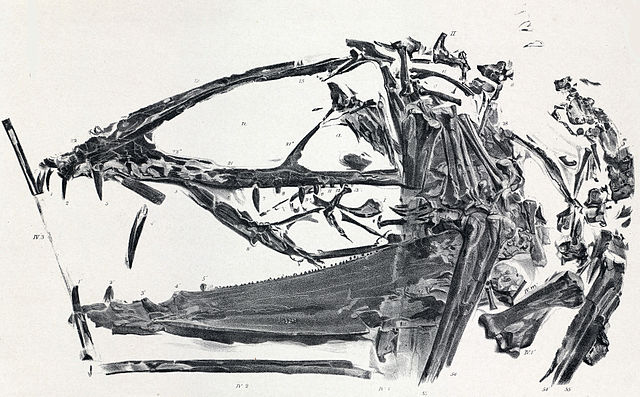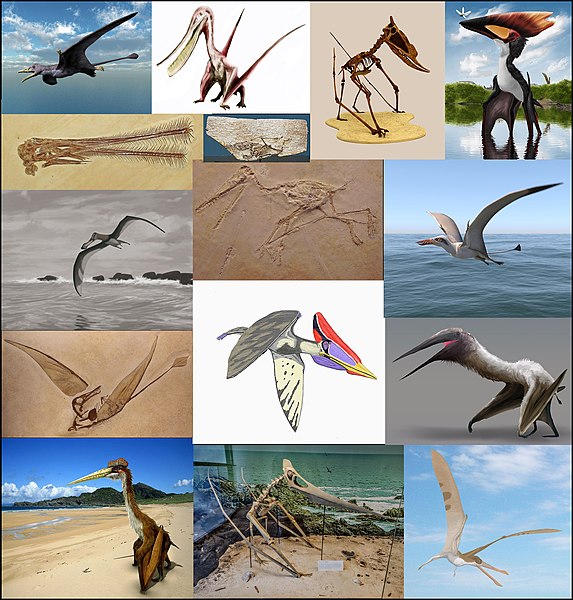Dimorphodon was a genus of medium-sized pterosaur from Europe during the early Jurassic Period. It was named by paleontologist Richard Owen in 1859. Dimorphodon means "two-form tooth", derived from the Greek δι meaning "two", μορφη meaning "shape" and οδων meaning "tooth", referring to the fact that it had two distinct types of teeth in its jaws – which is comparatively rare among reptiles. The diet of Dimorphodon has been questioned among researchers, with earlier interpretations depicting it as an insectivore or a piscivore. Recent studies have suggested that Dimorphodon likely hunted small vertebrates, though it still would have consumed soft invertebrates like insects.
Restoration of a pair of D. macronyx
D. macronyx holotype specimen, NHMUK PV R 1034
Illustration of D. macronyx specimen NHUK PV R1035
Cast of D. macronyx specimen NHMUK PV OR 41212
Pterosaurs are an extinct clade of flying reptiles in the order Pterosauria. They existed during most of the Mesozoic: from the Late Triassic to the end of the Cretaceous. Pterosaurs are the earliest vertebrates known to have evolved powered flight. Their wings were formed by a membrane of skin, muscle, and other tissues stretching from the ankles to a dramatically lengthened fourth finger.
Pterosaur
Conical tooth, possibly from Coloborhynchus
The skull of Thalassodromeus
A neck vertebra of Arambourgiania








